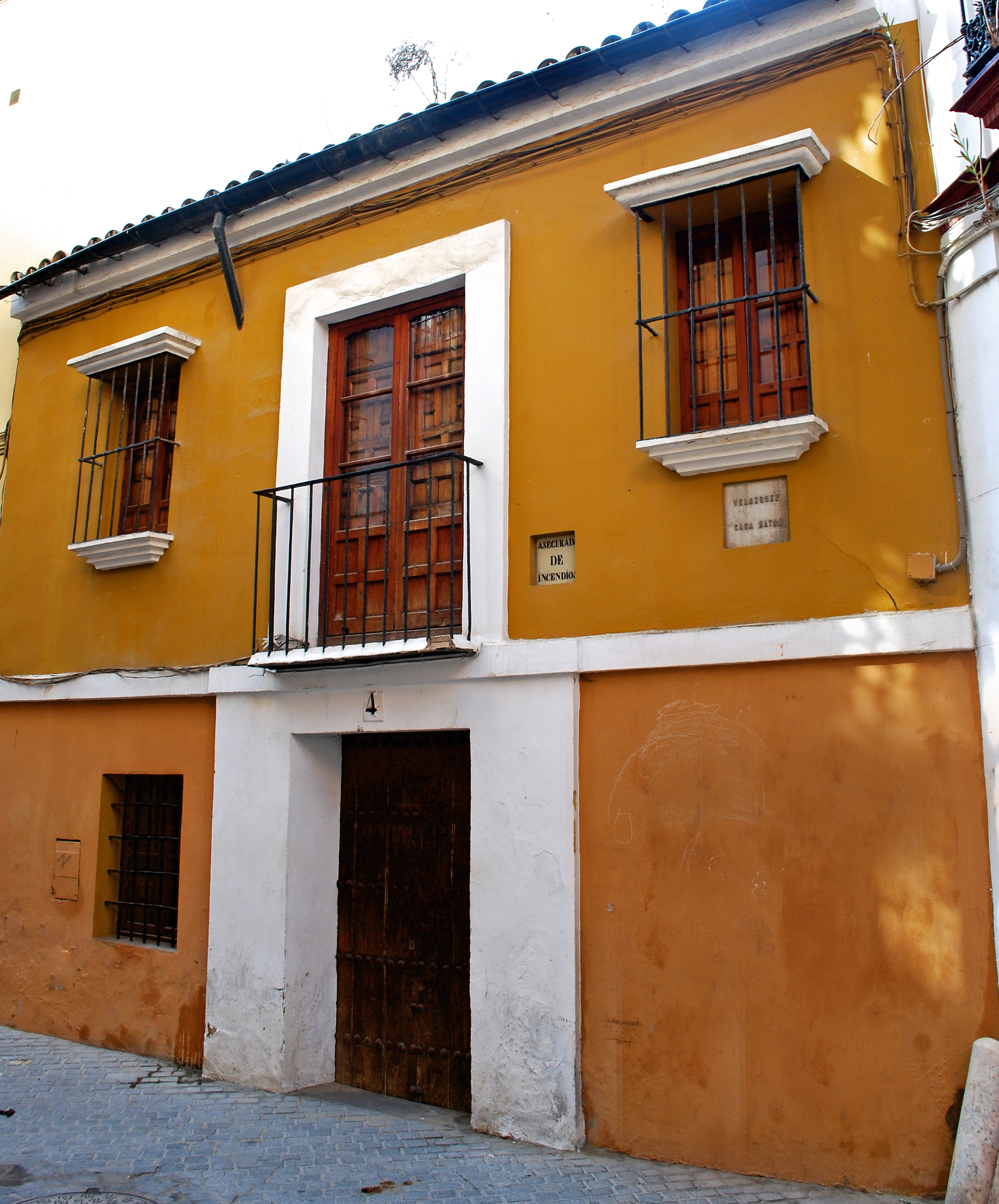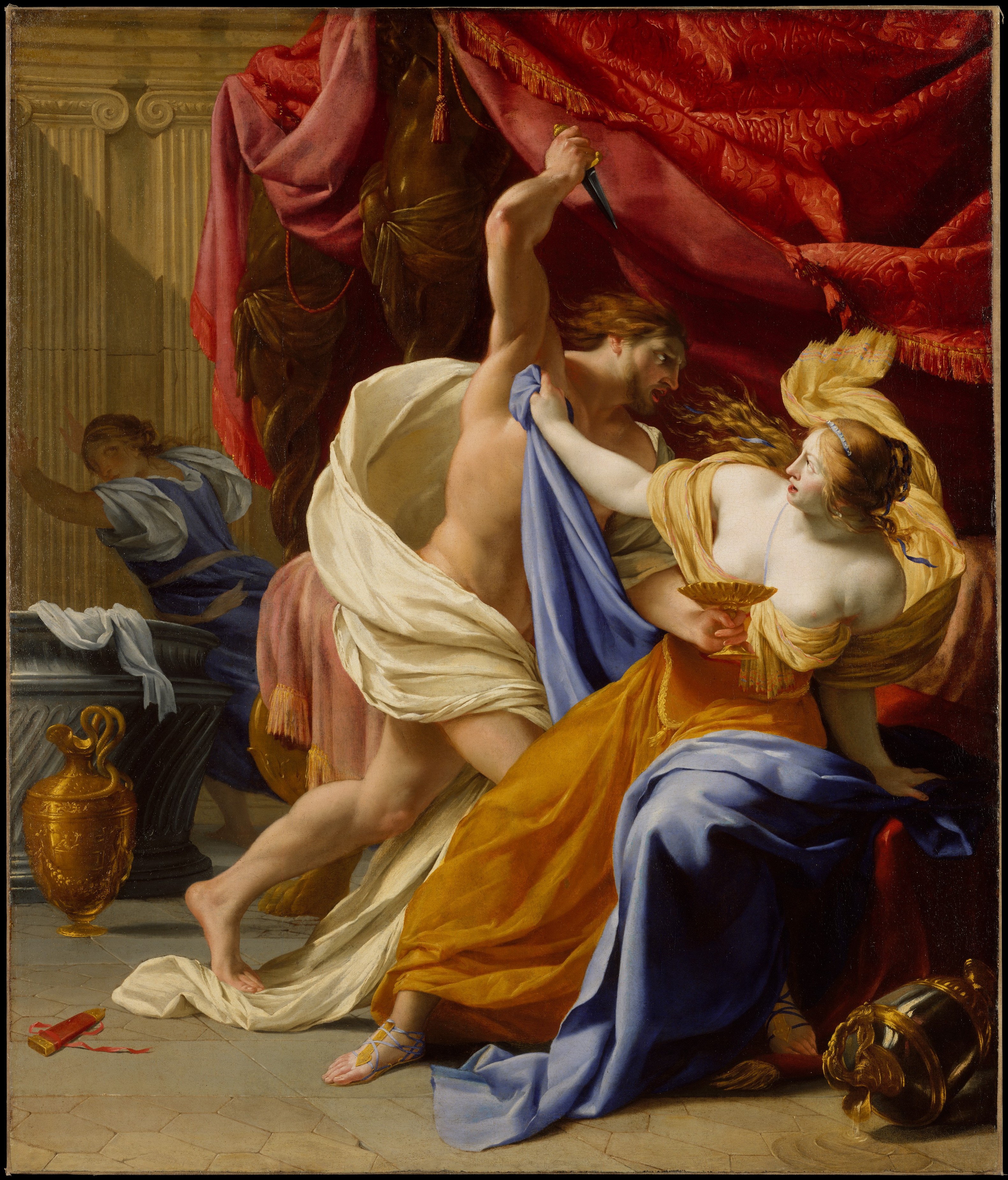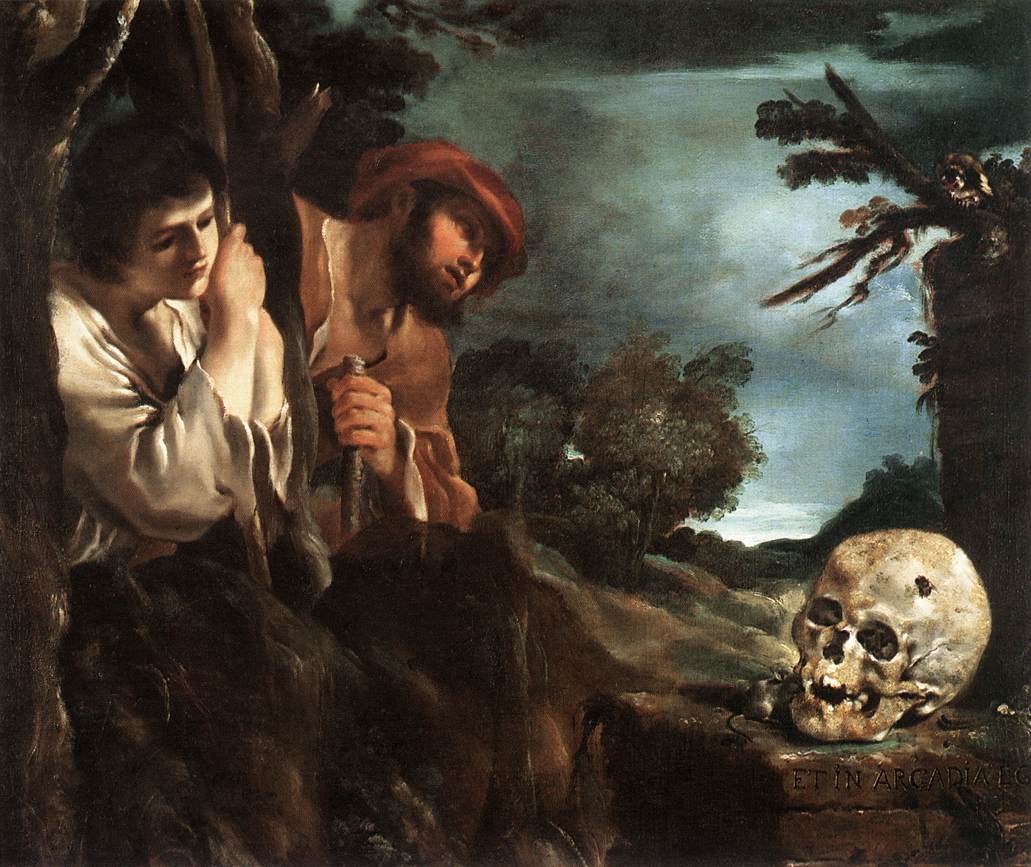|
Musée Des Beaux-arts De Rouen
The Musée des Beaux-Arts de Rouen () is an art museum in Rouen, in Normandy in north-western France. It was established by Napoléon Bonaparte in 1801, and is housed in a building designed by and built between 1877, and 1888. Its collections include paintings, sculptures, drawings and objets d'art. History The museum was established by Napoléon Bonaparte in 1801. The museum building was built between 1877, and 1888 to designs by . The collections include paintings, sculptures, drawings and objets d'art from the Renaissance to the present day, including a collection of Russian icons dating from the fifteenth to the early nineteenth century, and some 8000 drawings. The Depeaux collection of Impressionist works was donated to the museum in 1909. The Rouen Museum of Fine Arts is one of the main regional museums in France6. It is located in the heart of the city, opposite Square Verdrel, in a building whose complete renovation was completed in 1994. In addition to the prese ... [...More Info...] [...Related Items...] OR: [Wikipedia] [Google] [Baidu] |
Rouen
Rouen (, ; or ) is a city on the River Seine, in northwestern France. It is in the prefecture of Regions of France, region of Normandy (administrative region), Normandy and the Departments of France, department of Seine-Maritime. Formerly one of the largest and most prosperous cities of medieval Europe, the population of the metropolitan area () is 702,945 (2018). People from Rouen are known as ''Rouennais''. Rouen was the seat of the Exchequer of Normandy during the Middle Ages. It was one of the capitals of the Anglo-Normans, Anglo-Norman and Angevin kings of England, Angevin dynasties, which ruled both England and large parts of modern France from the 11th to the 15th centuries. From the 13th century onwards, the city experienced a remarkable economic boom, thanks in particular to the development of textile factories and river trade. Claimed by both the French and the English during the Hundred Years' War, it was on its soil that Joan of Arc was tried and burned alive on 30 ... [...More Info...] [...Related Items...] OR: [Wikipedia] [Google] [Baidu] |
Paolo Veronese
Paolo Caliari (152819 April 1588), known as Paolo Veronese ( , ; ), was an Italian Renaissance painter based in Venice, known for extremely large history paintings of religion and mythology, such as ''The Wedding at Cana (Veronese), The Wedding at Cana'' (1563) and ''The Feast in the House of Levi'' (1573). Included with Titian, a generation older, and Tintoretto, a decade senior, Veronese is one of the "great trio that dominated Venetian painting of the ''cinquecento''" and the Late Renaissance in the 16th century.Rosand, 107 Known as a supreme colorist, and after an early period with Mannerism, Paolo Veronese developed a naturalist style of painting, influenced by Titian. His most famous works are elaborate narrative cycles, executed in a dramatic and colorful style, full of majestic architectural settings and glittering pageantry. His large paintings of biblical feasts, crowded with figures, painted for the refectories of monasteries in Venice and Verona are especially famous ... [...More Info...] [...Related Items...] OR: [Wikipedia] [Google] [Baidu] |
Simon Vouet
Simon Vouet (; 9 January 1590 – 30 June 1649) was a French painter who studied and rose to prominence in Italy before being summoned by Louis XIII to serve as Premier peintre du Roi in France. He and his studio of artists created religious and mythological paintings, portraits, frescoes, tapestries, and massive decorative schemes for the king and for wealthy patrons, including Richelieu. During this time, "Vouet was indisputably the leading artist in Paris,"Posner, Donald. "''The Paintings of Simon Vouet'' " (book review), ''The Art Bulletin'', Vol. 45, No. 3 (Sept., 1963), pp. 286–291. and was immensely influential in introducing the Italian Baroque style of painting to France. He was also, according to Pierre Rosenberg, "without doubt one of the outstanding seventeenth-century draughtsmen, equal to Annibale Carracci and Lanfranco." Career Simon Vouet was born on January 9, 1590, in Paris. His father Laurent was a painter in Paris and taught him the rudiments of art. Simo ... [...More Info...] [...Related Items...] OR: [Wikipedia] [Google] [Baidu] |
Diego Velázquez
Diego Rodríguez de Silva y Velázquez (baptised 6 June 15996 August 1660) was a Spanish painter, the leading artist in the Noble court, court of King Philip IV of Spain, Philip IV of Spain and Portugal, and of the Spanish Golden Age. He is generally considered one of the greatest artists in the history of Art of Europe, Western art. He was an individualistic artist of the Baroque period (). He began to paint in a precise Tenebrism, tenebrist style, later developing a freer manner characterized by bold brushwork. In addition to numerous renditions of scenes of historical and cultural significance, he painted scores of portrait painting, portraits of the Spanish royal family and commoners, culminating in his masterpiece (1656). Velázquez's paintings became a model for 19th century realism (art movement), realist and impressionism, impressionist painters. In the 20th century, artists such as Pablo Picasso, Salvador Dalí, and Francis Bacon (artist), Francis Bacon paid trib ... [...More Info...] [...Related Items...] OR: [Wikipedia] [Google] [Baidu] |
Eustache Le Sueur
Eustache Le Sueur or Lesueur (; 19 November 161730 April 1655) was a French artist and one of the founders of the French Academy of Painting. He is known primarily for his paintings of religious subjects. He was a leading exponent of the neoclassical style of Parisian Atticism. Training and career He was born in Paris, where he spent his entire life. His father, Cathelin Le Sueur, a turner and sculptor in wood, placed him with Vouet, in whose studio he rapidly distinguished himself. Admitted at an early age into the guild of master-painters, he left them to take part in establishing the French Royal Academy of Painting and Sculpture in 1648 and was elected as one of the original twelve elders in charge of its administration. Some paintings, illustrative of the '' Hypnerotomachia Poliphili'', which were reproduced in tapestry, brought him notice, and his reputation was further enhanced by a series of decorations (Louvre) in the mansion of Lambert de Thorigny, which he left ... [...More Info...] [...Related Items...] OR: [Wikipedia] [Google] [Baidu] |
Rubens
Sir Peter Paul Rubens ( ; ; 28 June 1577 – 30 May 1640) was a Flemish artist and diplomat. He is considered the most influential artist of the Flemish Baroque tradition. Rubens' highly charged compositions reference erudite aspects of classical and Christian history. His unique and immensely popular Baroque style emphasised movement, colour, and sensuality, which followed the immediate, dramatic artistic style promoted in the Counter-Reformation. Rubens was a painter producing altarpieces, portraits, landscapes, and history paintings of mythological and allegorical subjects. He was also a prolific designer of cartoons for the Flemish tapestry workshops and of frontispieces for the publishers in Antwerp. Rubens was born and raised in the Holy Roman Empire The Holy Roman Empire, also known as the Holy Roman Empire of the German Nation after 1512, was a polity in Central and Western Europe, usually headed by the Holy Roman Emperor. It developed in the Early Middle Ages, ... [...More Info...] [...Related Items...] OR: [Wikipedia] [Google] [Baidu] |
Jusepe De Ribera
Jusepe de Ribera (; baptised 17 February 1591 – 3 November 1652) was a Spanish painter and Printmaking, printmaker. Ribera, Francisco de Zurbarán, Bartolomé Esteban Murillo, and the singular Diego Velázquez, are regarded as the major artists of Spanish Baroque painting. Referring to a series of Ribera exhibitions held in the late 20th century, Philippe de Montebello wrote "If Ribera's status as the undisputed protagonist of Neapolitan painting had ever been in doubt, it was no longer. Indeed, to many it seemed that Ribera emerged from these exhibitions as not simply the greatest Naples, Neapolitan artist of his age but one of the outstanding European masters of the seventeenth century."Pérez-Sánchez, Alfonso E., and Nicola Spinosa. 1992. Jusepe de Ribera 1519–1652'. The Metropolitan Museum of Art/Harry N. Abrams, Inc. New York. 290 pp, Jusepe de Ribera has also been referred to as José de Ribera (usual in Spanish and French), Josep de Ribera (in Catalan), and was called ... [...More Info...] [...Related Items...] OR: [Wikipedia] [Google] [Baidu] |
Nicolas Poussin
Nicolas Poussin (, , ; June 1594 – 19 November 1665) was a French painter who was a leading painter of the classical French Baroque style, although he spent most of his working life in Rome. Most of his works were on religious and mythological subjects painted for a small group of Italian and French collectors. He returned to Paris for a brief period to serve as First Painter to the King under Louis XIII and Cardinal Richelieu, but soon returned to Rome and resumed his more traditional themes. In his later years he gave growing prominence to the landscape in his paintings. His work is characterized by clarity, logic, and order, and favors line over color. Until the 20th century he remained a major inspiration for such classically-oriented artists as Jacques-Louis David, Jean-Auguste-Dominique Ingres and Paul Cézanne. Details of Poussin's artistic training are somewhat obscure. Around 1612 he traveled to Paris, where he studied under minor masters and completed his ea ... [...More Info...] [...Related Items...] OR: [Wikipedia] [Google] [Baidu] |
Pierre Mignard
Pierre Mignard or Pierre Mignard I (; 17 November 1612 – 30 May 1695), called "Mignard le Romain" to distinguish him from his brother Nicolas Mignard, was a French painter known for his religious and mythological scenes and portraits. He was a near-contemporary of the Premier Peintre du Roi Charles Le Brun with whom he engaged in a bitter, life-long rivalry.Lada Nikolenko. "Mignard." Grove Art Online. Oxford Art Online. Oxford University Press. Web. 25 May. 2017 Life Pierre Mignard was born at Troyes in 1612 as the son of Pierre and Marie Gallois. He came from a family of artisans. He was the younger brother of Nicolas, who became a painter and etcher who was mainly active in Avignon and was known as Mignard d'Avignon.Albert Babeau, ''Nicolas Mignard - sa vie et ses oeuvres'' in: 'Ann ... [...More Info...] [...Related Items...] OR: [Wikipedia] [Google] [Baidu] |
Laurent De La Hyre
Laurent de La Hyre (; 27 February 1606 – 28 December 1656) was a French Baroque painting, Baroque Painting, painter, born in Paris. He was a leading exponent of the neoclassical style of Parisian Atticism. Life La Hyre was greatly influenced by the work of Italian artists who came to Paris. He became a pupil of Georges Lallemand and studied the works of Francesco Primaticcio, Primaticcio at Fontainebleau, but never visited Italy. La Hyre's captivating use of color and delicately posed figures are a trademark of his early, painteresque style. He was an innovative artist who used his superior skills as a storyteller to portray rarely depicted subjects. La Hyre is associated with the transitional period before the introduction of the French Baroque by Simon Vouet. His picture of Pope Nicholas V opening the crypt in which he discovers the corpse of St. Francis of Assisi standing (located at the Louvre) was executed in 1630 for the Capuchin friars of the Le Marais, Marais; its g ... [...More Info...] [...Related Items...] OR: [Wikipedia] [Google] [Baidu] |
Guercino
Giovanni Francesco Barbieri (February 8, 1591 – December 22, 1666),Miller, 1964 better known as (il) Guercino (), was an Italian Baroque painter and draftsman from Cento in the Emilia region, who was active in Rome and Bologna. The vigorous naturalism of his early manner contrasts with the classical equilibrium of his later works. His many drawings are noted for their luminosity and lively style. Biography Giovanni Francesco Barbieri was born into a family of peasant farmers in Cento, a town in the Po Valley mid-way between Bologna and Ferrara.Mahon, 1937a Being cross-eyed, at an early age he acquired the nickname by which he is universally known, Guercino (a diminutive of the Italian noun , meaning 'squinter').Turner, 2003 Mainly self-taught, at the age of 16, he worked as apprentice in the shop of Benedetto Gennari, a painter of the Bolognese School. An early commission was for the decoration with frescoes (1615–1616) of Casa Pannini in Cento, where the naturalis ... [...More Info...] [...Related Items...] OR: [Wikipedia] [Google] [Baidu] |
Luca Giordano
Luca Giordano (18 October 1634 – 3 January 1705) was an Italian late-Baroque painter and printmaker in etching. Fluent and decorative, he worked successfully in Naples, Rome, Florence, and Venice, before spending a decade in Spain. Early life and training Born in Naples, Giordano was the son of the painter Antonio Giordano. In around 1650 he was apprenticed to Giuseppe Ribera, Ribera on the recommendation of the List of viceroys of Naples, viceroy of Naples and his early work was heavily influenced by his teacher. Like Ribera, he painted many half-length figures of philosophers, either imaginary portraits of specific figures, or generic types. He acquired the nickname ''Luca fa presto'', which translates into "Luca paints quickly." His speed, in design as well as handiwork, and his versatility, which enabled him to imitate other painters deceptively, earned for him two other epithets, "The Thunderbolt" (''Fulmine'') and "The Proteus" of painting. Following a period ... [...More Info...] [...Related Items...] OR: [Wikipedia] [Google] [Baidu] |








